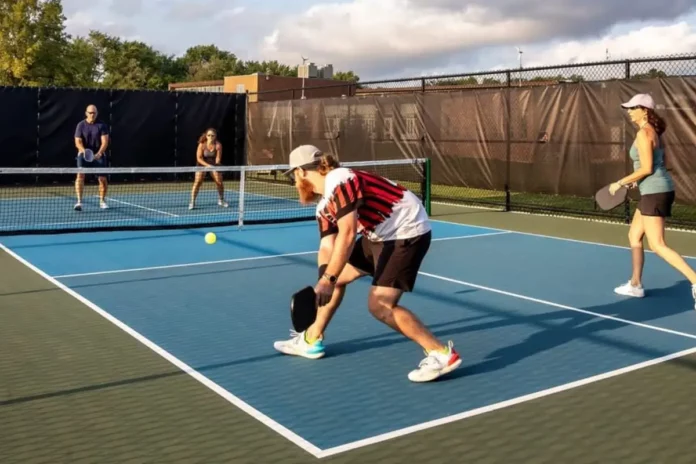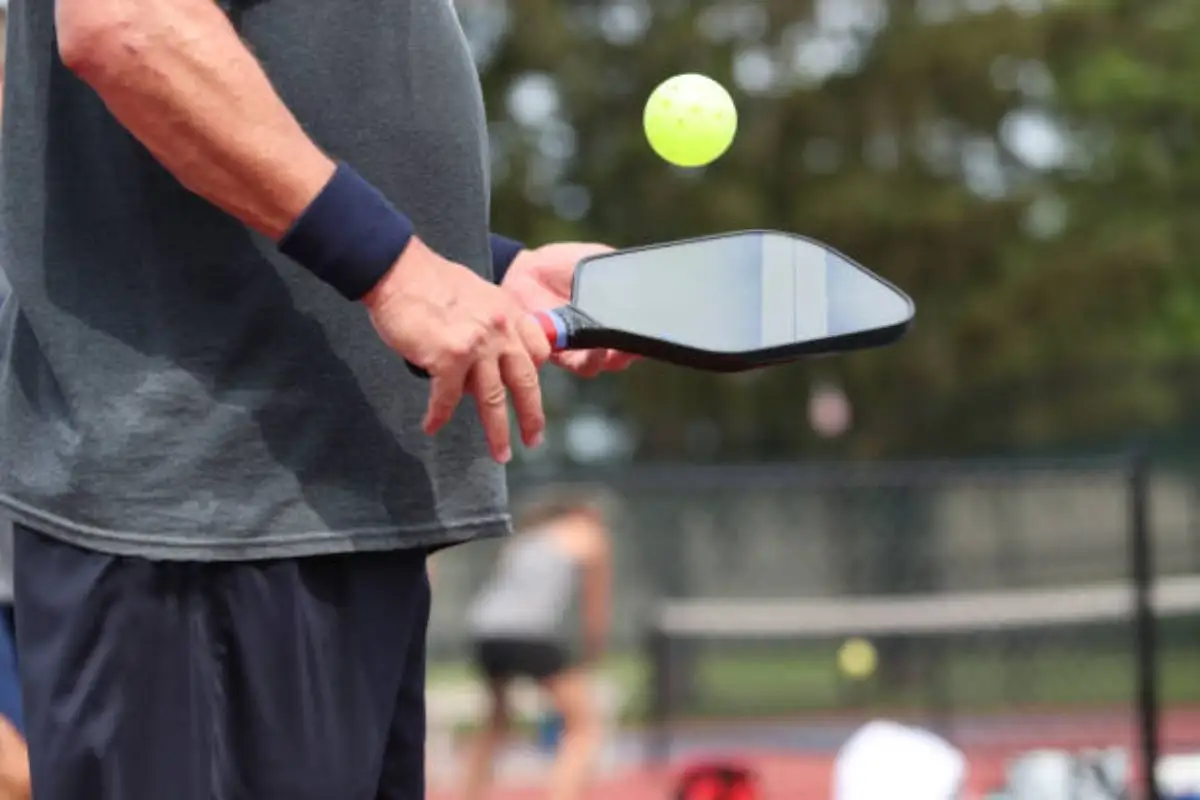Pickleball Doubles Strategy: In pickleball doubles, the importance of proper positioning cannot be overstated. It all begins with the starting position, a simple yet effective strategy that dictates the flow of the game. When the score is even—0, 2, 4, 6, 8, or 10—the player remains on the right side, while the partner takes the left. As the score shifts to odd numbers—1, 3, 5, 7, or 9—the players switch sides. This method ensures a consistent approach to positioning as the game progresses.
This foundational positioning is a simple rule that guides pickleball players through every game, ensuring the flow remains consistent, even as the score changes.
Normal Switching vs. Stacking: A Tale of Two Approaches
In most doubles matches, after winning a point, players switch sides. This traditional approach keeps players alternating positions as the score fluctuates. However, there’s an alternative approach that has been gaining traction: stacking.
Introducing Stacking: A Strategy to Maximize Strengths
Stacking allows players to remain on their “stronger side” throughout the game, rather than switching sides after every point. This means that a player who prefers the left side can stay on the left, while their partner, who prefers the right, remains on the right. This strategy helps players maximize their strengths and minimize weaknesses during the match.
How Stacking Works: Positioning for Success
The key to stacking is that players begin the game on the same side of the court. This approach is completely legal and allows the players to take their positions after the serve. Once the serve is made, they return to their preferred sides—one on the left, one on the right—ensuring they are playing to their individual strengths.
Stacking allows players to maintain their optimal positioning throughout the game, enhancing their ability to control the court.
The Benefits of Stacking: Why This Strategy Works
Stacking provides several distinct advantages that can make a noticeable difference in doubles play. Here are the key reasons why stacking is often the preferred choice for experienced players:
- Taller Players Benefit from Increased Reach: A taller player often has a longer reach, making it advantageous for them to play on the left side, where they can cover more of the middle of the court.
- Stronger Forehands: In mixed doubles, players with a stronger forehand may prefer the left side, maximizing their offensive power.
- Righty-Lefty Advantage: A combination of right-handed and left-handed players can dominate the center, improving court coverage and offensive potential.
- Concealing Weaknesses: Players with a weaker backhand can take the right side, relying on their stronger forehand to cover more of the court.
- Highlighting Strengths: Positioning a player with a powerful forehand or aggressive “Ernie” player on their preferred side enhances offensive pressure.
- Changing the Game: If one side is being dominated, switching sides mid-game can throw off the opponent’s rhythm and provide a fresh perspective.
Stacking on the Return: A Key Element to Master
One of the trickiest aspects of stacking occurs when receiving the serve. The key here is to remember the starting position: when the score is even, the player will stand on the right side; when it’s odd, the player will move to the left side. This consistency helps eliminate confusion during the return.
The After-Return Switch: A Smooth Transition
After the return, the after-return switch allows for fluid movement and positioning. Here’s how it works: Before play starts, the player at the net signals to their partner whether they should stay or switch. A fist means “stay,” while an open hand signals “switch.” Once the return is made, the player at the net moves to the right, while the returning player moves to their preferred side.
This pickleball technique ensures that players cover the court efficiently, minimizing any potential gaps in coverage.
The Step-On Approach: A More Seamless Transition
Another method to master is the step-on approach. In this pickleball technique, the player at the net stays to the right side. After the return, they step onto their preferred side without crossing in front of their partner. This approach ensures that both players maintain visual contact with the ball and are in a position to cover the court effectively.
The Step-On Approach
The step-on method requires precision and timing but allows players to transition without crossing paths, ensuring a smooth and effective shift in positioning.
Making Stacking Work for the Team
Mastering stacking in pickleball doubles isn’t easy, but when executed correctly, it can change the course of a game. By staying on their preferred sides, players can leverage their strengths and minimize weaknesses. The after-return switch and step-on approach ensures smooth transitions, enabling teams to control the game and keep opponents on their toes.
News in Brief: Pickleball Doubles Strategy
Stacking allows pickleball doubles teams to remain on their preferred sides throughout the game, optimizing their strengths. Players can maintain these positions by executing the after-return switch or the step-on approach, which minimizes coverage gaps. This pickleball strategy maximizes offensive opportunities, allowing players to play to their strengths and adapt quickly during the match. The flexibility of stacking makes it a popular and effective strategy for experienced teams.
ALSO READ: 10 Must-Know Pickleball Doubles Strategies for Every Skill Level



